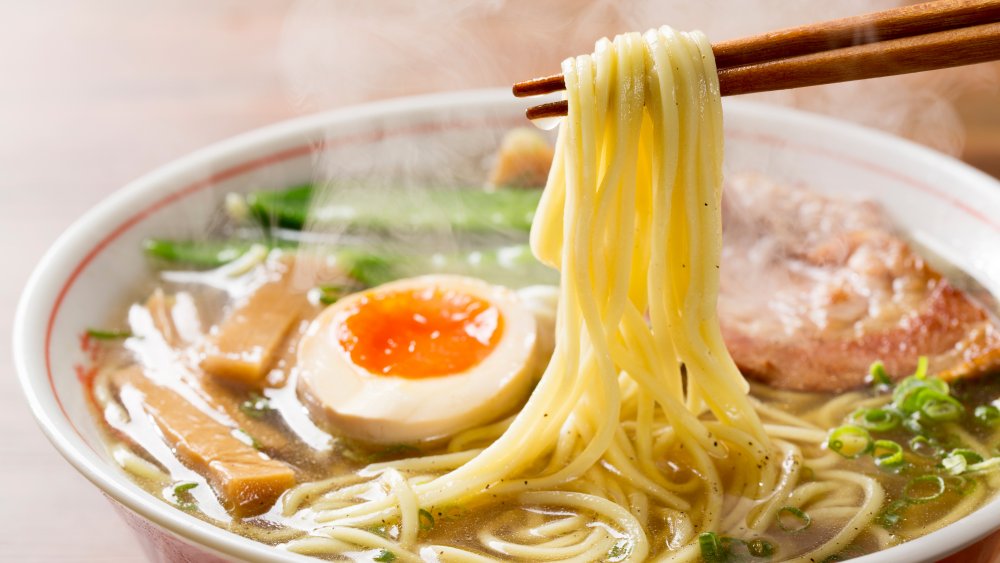You Probably Don't Know About The True Origin Of Ramen
When most of us think of ramen, we think of it as the packages of soup we used to eat as a kid. Or we remember how it was pretty much the only thing we could afford as college students on a budget. Let's be honest. Instant ramen was also the only thing we really knew how to cook at that point and it was super easy to make. But the Maruchan Ramen Noodle Soup we know and love, with flavors like chicken, beef and shrimp, is not the original ramen.
Many think the first ramen dish that was served at a restaurant was invented in Japan, but that's not the case. George Solt is a professor at New York University who has done extensive research into the origins of the beloved soup, according to The New Yorker. Through his work, Solt discovered ramen actually originated in China in the 19th century. Chinese tradesmen brought the soup over to Japan.
Ramen didn't gain massive popularity until the 1950s
According to First We Feast, Solt's research found the Japanese first had ramen at the Rai-Rai Ken restaurant in Tokyo. The eatery opened in 1910 and employed Chinese cooks who made a popular dish called "shina soba." "Shina" translated to "China," and "soba" means "noodle dish." The meal became a hit with blue-collar workers because it was inexpensive and filling. It didn't reach the masses, however, until decades later.
As The Nation reported, Japan suffered from food shortages and famine during World War II. The government decided on tighter food regulations and prohibited restaurants from making a profit on food, a rule enforced until 1949 (via First We Feast). Because of the black market, however, people could acquire wheat flour and so were able to enjoy ramen secretly. By the 1950s, it was reintroduced as an upscale food for Japanese families and became widely popular. The rest, as they say, is history.

